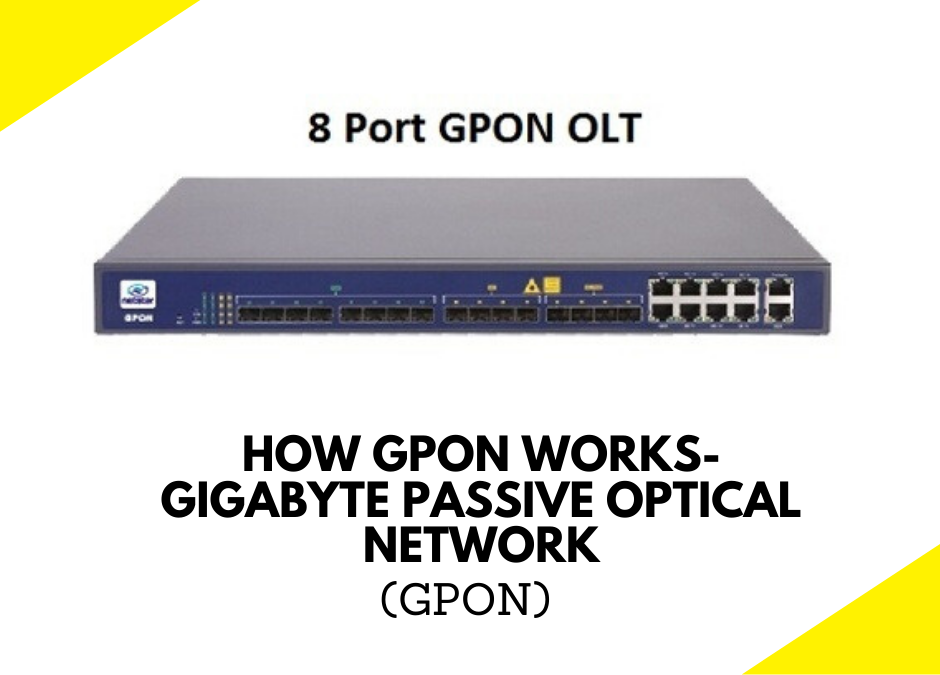
How GPON Works – Gigabyte Passive Optical Network
GPON (Gigabyte Passive Optical Network) is a fiber optic technology. GPON is a point to multipoint infrastructure. GPON networks rely on optical cables to deliver information. Currently, they are the most leading form of Passive Optical Networks.
GPON can offer up to a 1:64 ratio on a single fiber. Also, as opposed to the standard copper wire in most of the networks GPON is 95% more energy efficient. In addition to efficiency, Gigabyte Passive Optical Networks provide low-cost solutions to adding users through splitters which make GPON desirable in the populated areas.
How GPON Works?
The GPON technology is based on the ITU-T G.984 standard, a single network of GPON can transmit ethernet, TDM (Time Division Multiplexing) as well as ATM traffic. GPON network consists of an optical line terminal (OLT) belonging to the service provider, ONU (Optical Network Unit), and a splitter.
In this, the ONUs may or may not be the end user’s premises but they serve single customers. They can convert the optical signal to electrical or RF signals which the end user’s equipment gets connected to.
The splitter is used to divide the signals when required. OLT takes in all of the optical signals in the form of beams of light from ONUs and converts to electrical signals. OLT usually supports up to 72 ports. The ONU connects to end-users and sends their signals back to the OLT. A GPON network can reach up to 20km and can provide services up to 64 end users.
GPON uses both the upstream and downstream data utilizing Optical Wavelength Division Multiplexing (WDM). Downstream data travels over a 1490 nm signal with the highest speed of 2.488 gigabits per second. The upstream on the other hand uses 1310 nm wavelength and can carry up to 1.244 Gb/ second.
The next generation of GPON, called 10G GPON or XG-PON allows symmetric 10 Gb/second upload and download speeds.
GPON users are mainly homes or small businesses. GPON technology is popular in delivering data, voice, and IP videos. It may be packaged with an RF overlay at 1550 nm so that it can deliver standard cable videos as well.
Must Read: GPON vs EPON: Difference between GPON and EPON
Conclusion
The use of GPON is beneficial as they offer its customers various advantages like – greater ranger, faster speeds, low costs, flexible infrastructure capacities, environment friendly, and many space-saving benefits.
We hope this blog appeared useful and provided sufficient information about GPON. To get more learning about GPON check our other blogs as well.
For more information about fiber optic networks check our products http://www.santron.in/olt-onu/
If you have any doubts or queries, feel free to contact us.

